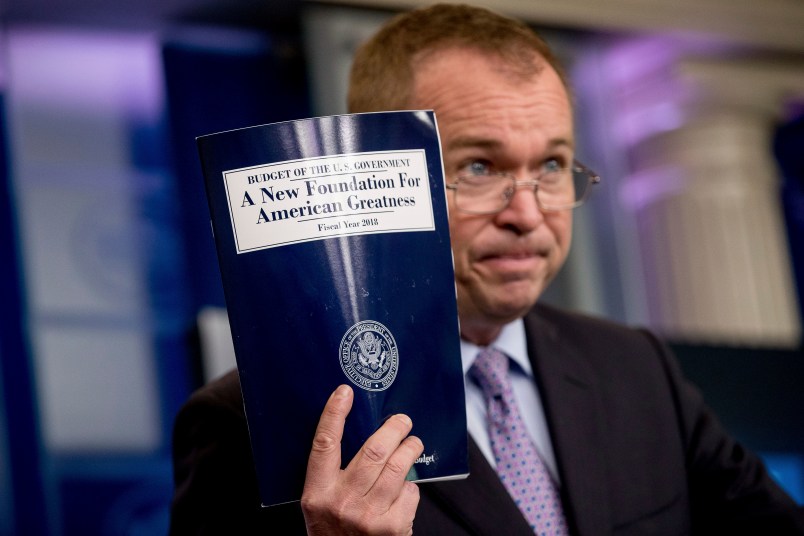White House Budget Director Mick Mulvaney said Tuesday that he hoped fewer people received Social Security Disability Insurance (SSDI) as a result of President Donald Trump’s 2018 budget proposal, suggesting that some SSDI recipients were not “really disabled.”
He said the proposal was the “definition of compassionate: a compassion that is balanced between the people who get the benefits and the people who pay them.”
Trump’s budget proposal, though widely disregarded by congressional appropriators, would cut $31.4 billion from SSDI over 10 years, according to the Washington Post.
“I recognize that he’s going to be saving Social Security Retirement, but he’s not saving Social Security Disability Insurance, which benefits more than 10 million Americans,” NBC’s Peter Alexander told Mulvaney in a press briefing Tuesday, pointing to Trump’s repeated campaign promises not to cut Social Security. “So is the President keeping his promise on that program?”
Mulvaney argued that SSDI “is not what most people would consider to be Social Security.”
“So will any of those individuals who presently receive SSDI receive less as a result of this budget?” Alexander asked.
“I hope so,” Mulvaney said. “If there are people who are getting SSDI who should not be getting it— “
“Those people who should be getting it — will they receive less?” Alexander interjected.
“Oh no,” Mulvaney said. “If people are really disabled, and there are folks who need this program— ”
Alexander asked how the federal government would determine who shouldn’t be getting SSDI.
Mulvaney said the question was “in the weeds,” but floated a change to “how we pick the administrative law judges,” who render decisions on disability claims.
Applying for SSDI is a multi-step process that can take months or years, after which a majority of applicants are rejected.
“There is fraud, no doubt,” the New York Times‘ Teresa Tritch argued in 2015. “But there is no evidence it is rampant.” Tritch pointed to a telling statistic: “If people on disability were faking it, they wouldn’t have such high death rates.”
“We are not kicking anybody off of any program who really needs it,” Mulvaney said. “We have plenty of money in this country to take care of the people who need help. And we will do that. We don’t have enough money to take care of people — everybody who doesn’t need help. So what we try and do is look at these programs, again through the perspective of the people paying for it.”
He compared the proposed SSDI cuts to the enormous proposed cuts to the food stamp program — $193.3 billion over 10 years, or a 28.8 percent reduction, according to the Washington Post.
“If you’re paying for it, isn’t it reasonable for you to at least ask the question: Are there people on that program who shouldn’t be on there?” he asked. “And shouldn’t it be up to the government to make sure we can look folks who are paying the taxes in the eye and say, ‘You know what, we did everything we could to make sure that everybody on SSDI is really disabled’?”
“We don’t think that’s unreasonable,” Mulvaney continued. “In fact, we think that is the definition of compassionate: a compassion that is balanced between the people who get the benefits and the people who pay them.”







Hey guys… you keep on dry humping that third-rail…
The far better question at the moment is:
Aren’t there people in the Executive Branch who shouldn’t be there?
You know who doesn’t need your fucking help?
Hedge fund managers and the benefactors of great inherited wealth (Kochs, tRump, et al)
But you’re gonna help 'em anyway, aren’t ya
I’ve got a better plan for A New Foundation For American Greatness:
Shuffle the entire GOP to a tropical deserted island and then…
There are some counties in Trump Country where his face and this quote would make one heck of a billboard.